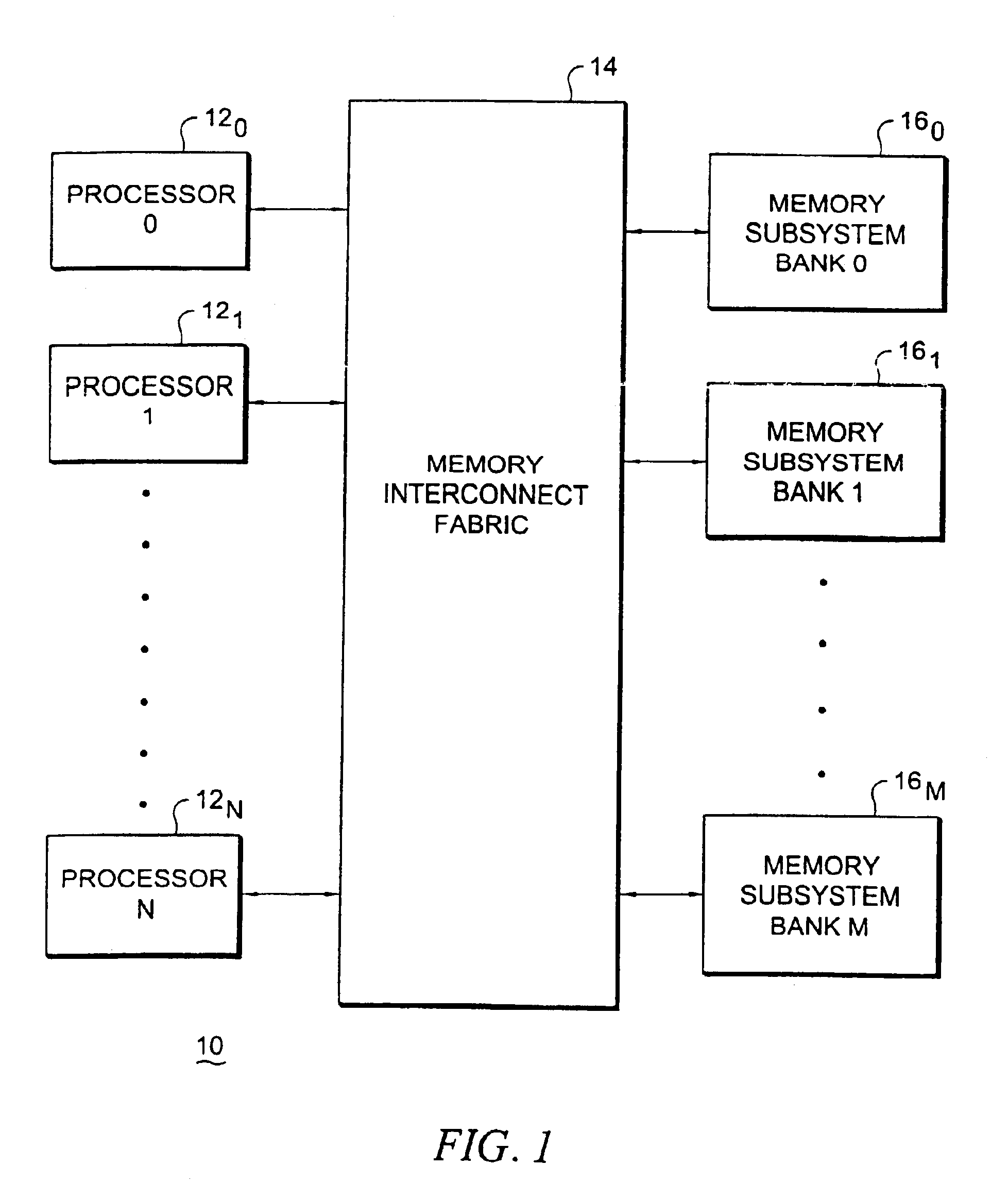Multiprocessor computer architecture incorporating a plurality of memory algorithm processors in the memory subsystem
a multi-processor computer and memory subsystem technology, applied in the field of multi-processor computer architectures, can solve the problems of general slow operation, accelerate some program execution speed, and single function computers are inherently not particularly versatile computers, and achieve the effect of high performance, manufacturing cost and design time of a particular multi-processor computer system
- Summary
- Abstract
- Description
- Claims
- Application Information
AI Technical Summary
Benefits of technology
Problems solved by technology
Method used
Image
Examples
Embodiment Construction
[0016]With reference now to FIG. 1, a conventional multiprocessor computer 10 architecture is shown. The multiprocessor computer 10 incorporates N processors 120 through 12N which are bi-directionally coupled to a memory interconnect fabric 14. The memory interconnect fabric 14 is then also coupled to M memory banks comprising memory bank subsystems 160 (Bank 0) through 16m (Bank M) With reference now to FIG. 2, a representative application program decomposition for a multiprocessor computer architecture 100 incorporating a plurality of memory algorithm processors in accordance with the present invention is shown. The computer architecture 100 is operative in response to user instructions and data which, in a coarse grained portion of the decomposition, are selectively directed to one of (for purposes of example only) four parallel regions 1021 through 1024 inclusive. The instructions and data output from each of the parallel regions 1021 through 1024 are respectively input to paral...
PUM
 Login to View More
Login to View More Abstract
Description
Claims
Application Information
 Login to View More
Login to View More - R&D
- Intellectual Property
- Life Sciences
- Materials
- Tech Scout
- Unparalleled Data Quality
- Higher Quality Content
- 60% Fewer Hallucinations
Browse by: Latest US Patents, China's latest patents, Technical Efficacy Thesaurus, Application Domain, Technology Topic, Popular Technical Reports.
© 2025 PatSnap. All rights reserved.Legal|Privacy policy|Modern Slavery Act Transparency Statement|Sitemap|About US| Contact US: help@patsnap.com



